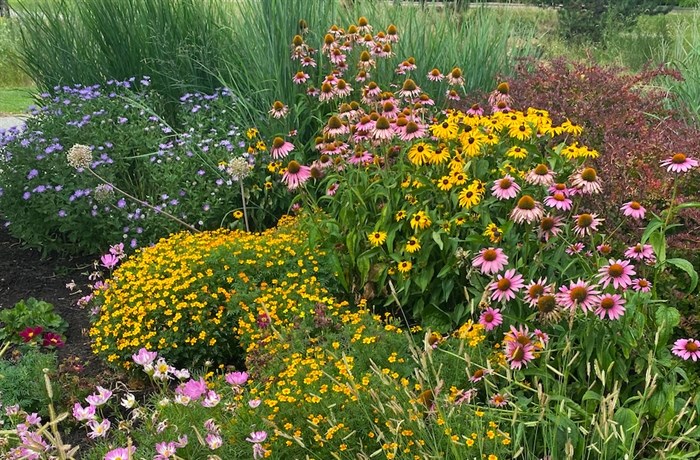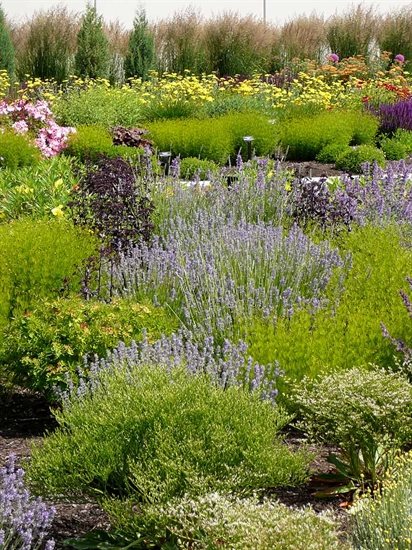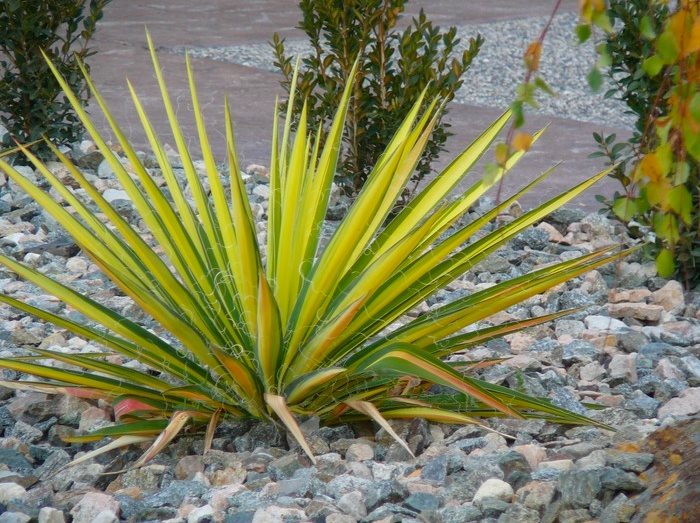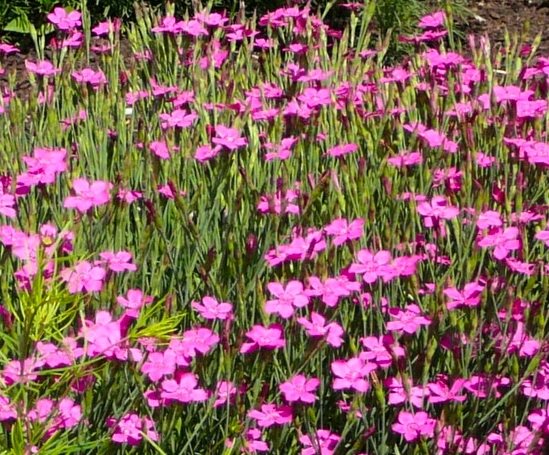Eliminating thirsty plants in the Thompson-Okanagan sacrifices no beauty
The Thompson-Okanagan doesn’t qualify as a desert but its summers are typically hot and dry so it makes no sense to decorate yards with very thirsty plants.
Yet, that’s what’s happening all too often, even by the City of Kelowna’s parks department with its banana, alocasia and other tropical plants.
“A number of years ago the city gave us a little xeriscape garden right down there by the (Queensway) bus loop,” Sigrie Kendrick, executive director of the Okanagan Xeriscape Association, told iNFOnews.ca.
“(We) were digging it out. It was early May and really hot when, all of sudden, here comes this cadre of young city guys and they start planting and what they’re planting are arcanas. They’re basically Florida swamp plants. I asked one of the guys: ‘Why aren’t you planting something that’s more regionally appropriate?’ and he said: ‘The exotic plants bring the tourists downtown.’”
That may have been a few years ago but there are still banana trees and other tropicals growing in front of City Hall.
READ MORE: An outdoor banana tree in the Okanagan? Here's how you can grow yours
“We have much more support with the City of West Kelowna than we do with our city council here,” Kendrick said.
The association opened its second xeriscape garden in Westbank Centre Park last summer. The Kelowna garden is next to the H2O centre and has recently been expanded.
She doesn’t know why West Kelowna council is more supportive but points to education which slowly seems to be getting the message out that plants requiring very little water are ideal for the Okanagan climate – which is what xeriscape gardening is all about.
“A lot more people are being charged for their water,” Kendrick said. “For a lot of people, when they get hit in the pocketbook, it becomes a reality.”
That doesn’t mean someone has to expect fields and hillsides of dried-up brown grass that are typical of many unwatered parts of the Okanagan.
“There is that aspect to it, which is why we’re trying to introduce plants from other places – Mediterranean plants or plants from South Africa – that give you a little more bang for your buck in terms of ornamental appeal but can still cope with the lack of water we have here,” Kendrick said.
The association’s website has listings of close to 500 plants that can be searched by things like bloom time, colour, water requirements, light requirements or slope stabilization.
Even by deer resistance.
Deer don’t like aromatic plants like lavender, allium (which are in the onion family so they stink) and the prickly Japanese barberry.
The problem is, sometimes the deer are so desperate for food that they’ll be forced to try anything.
READ MORE: How to protect the Okanagan's precious water supply when planting your garden
“You look at a yucca,” Kendrick gave as an example of how to bring colour to a xeriscape garden. “You know it’s drought tolerant just by how it looks. It doesn’t look nice. It looks kind of nasty, pointy. I like things like dianthus, things that look pretty and soft but are in reality very resilient.”
Xeriscape gardening is not about using zero water and filling the garden with rocks or mulch.
The plants tend to need plenty of water in their first year so they can get established but, after that, may need little or no extra watering.
There’s plenty of information on the Okanagan Xeriscape Association’s website here.
Courses are given each spring and fall (the date for this spring is not yet posted but a course given for professionals in February was sold out).
The association’s annual fundraising plant sale is May 6 at Wild Bloom Nursery at 840 Old Vernon Road.
The sale has expanded from offering cuttings from the xeriscape gardens and a few volunteers to include a much wider selection from plant plugs.
Local garden centres are bringing in more drought tolerant plants, including ones that are native to the Okanagan. But it doesn’t hurt for growers to put pressure on them to stock more native plants.
“I used to talk to clients about planting natives because obviously, natives have an intrinsic relationship with a lot of our native pollinators,” Kendrick said. “But it was a hard sell because the closest place you could get natives was Sagebrush down in Oliver.”
She pointed to XEN (Xeriscape Endemic Nursery) and Dogwood Nursery as businesses that are making drought resistant and native plants much more accessible to Central Okanagan growers.
To contact a reporter for this story, email Rob Munro or call 250-808-0143 or email the editor. You can also submit photos, videos or news tips to the newsroom and be entered to win a monthly prize draw.
We welcome your comments and opinions on our stories but play nice. We won't censor or delete comments unless they contain off-topic statements or links, unnecessary vulgarity, false facts, spam or obviously fake profiles. If you have any concerns about what you see in comments, email the editor in the link above.







